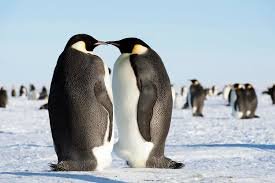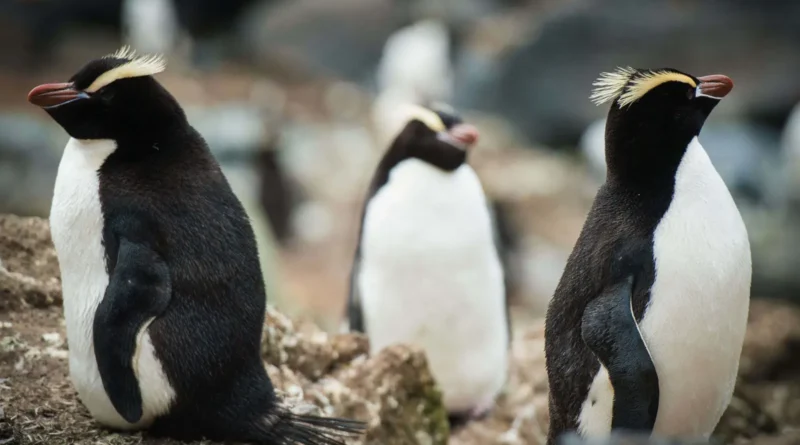Understanding Fat Penguins
I. Introduction
A. Definition and Perception of Fat Penguins
Fat penguins are characterized by their robust bodies and ample plumage, which often lead to various perceptions and stereotypes. However, understanding the true nature of fat penguins goes beyond mere appearances.
B. Common Misconceptions and Stereotypes
There are many misconceptions surrounding fat penguins, including assumptions about their health and lifestyle. These stereotypes often overlook the ecological importance of fat penguins in their habitats.
C. Importance of Understanding Fat Penguins in Conservation
Understanding fat penguins is crucial for conservation efforts, as they play significant roles in their ecosystems. By unraveling the mysteries of fat penguins, we can better protect their habitats and ensure their survival for future generations.
II. Physical Characteristics of Fat Penguins
A. Body Size and Shape
Fat penguins exhibit variations in body size and shape, influenced by factors such as species, age, and environmental conditions. Their robust bodies are adapted for survival in cold Antarctic waters.
B. Plumage and Insulation
Plumage plays a vital role in insulating fat penguins from the cold, providing them with essential protection against harsh environmental conditions. Their thick feathers help retain body heat and keep them warm in frigid waters.
C. Adaptations for Thermal Regulation
Fat penguins possess specialized adaptations for thermal regulation, enabling them to maintain stable body temperatures despite the extreme cold. These adaptations allow them to thrive in their icy habitats.
III. Factors Contributing to Fatness in Penguins
A. Feeding Habits and Diet Composition
The fatness of penguins is influenced by their feeding habits and diet composition. Different species have unique dietary preferences, which can impact their fat reserves.
B. Seasonal Variation in Body Condition
Seasonal changes, such as breeding cycles and fluctuations in food availability, can affect the body condition of fat penguins. Understanding these variations is essential for assessing their overall health and well-being.
C. Environmental Factors and Habitat Influence
Environmental factors, including ocean currents and sea ice dynamics, play a significant role in shaping the habitats of fat penguins. Changes in these factors can have profound effects on their fatness and survival.
IV. Behavioral Insights into Fat Penguins

A. Foraging Strategies and Energy Expenditure
Fat penguins employ various foraging strategies to acquire food efficiently while minimizing energy expenditure. Their hunting techniques are adapted to their environments, allowing them to thrive in challenging conditions.
B. Breeding Success and Parental Investment
Breeding success and parental investment are influenced by the fatness of penguins. Well-nourished individuals demonstrate higher reproductive output, contributing to the overall population dynamics.
C. Social Dynamics within Fat Penguin Colonies
Social dynamics within fat penguin colonies play a crucial role in resource competition, mate selection, and overall population health. Understanding these dynamics is essential for assessing the stability of penguin populations.
V. Health and Well-being of Fat Penguins
A. Impact of Fatness on Overall Health
While fat reserves are essential for survival in cold environments, excessive fatness can pose health risks for penguins. Understanding the impact of fatness on overall health is essential for conservation efforts.
B. Disease Risks and Immune Function
Fat penguins may face increased risks of disease due to compromised immune function associated with excessive fat reserves. Disease outbreaks can have devastating effects on penguin populations, highlighting the importance of disease monitoring and prevention.
C. Human-Induced Stressors and Conservation Concerns
Human-induced stressors, such as pollution and habitat destruction, pose significant threats to the health and well-being of fat penguins. Conservation efforts must address these threats to ensure the long-term survival of penguin populations.
VI. Conservation Implications for Fat Penguins
A. Monitoring and Research Initiatives
Ongoing monitoring and research initiatives are essential for understanding the ecology and conservation status of fat penguins. These efforts provide valuable data for conservation decision-making.
B. Mitigation Strategies for Human-Induced Threats
Implementing mitigation strategies to address human-induced threats is crucial for safeguarding fat penguins and their habitats. These strategies may include habitat protection, pollution control, and sustainable fishing practices.
C. Education and Public Awareness Campaigns
Education and public awareness campaigns play a vital role in fostering stewardship of fat penguins and their habitats. By raising awareness about the importance of penguin conservation, we can inspire action and support for conservation efforts.
VII. Future Directions in Fat Penguin Studies
A. Emerging Technologies and Methodologies
Advancements in technology and methodologies offer new opportunities for studying fat penguins and addressing conservation challenges. These innovations enable researchers to collect data more efficiently and accurately.
B. Collaborative Research Efforts and Partnerships
Collaborative research efforts and partnerships between scientists, conservation organizations, and governmental agencies are essential for advancing fat penguin studies and implementing effective conservation strategies. By working together, we can achieve greater success in protecting fat penguins and their habitats.
C. Long-term Goals for Fat Penguin Conservation
Long-term goals for fat penguin conservation include preserving their habitats, mitigating human-induced threats, and ensuring sustainable management of Antarctic ecosystems. By setting ambitious goals and working towards them, we can secure a bright future for fat penguins.
VIII. Conclusion
A. Recap of Key Insights into Fat Penguin Ecology
Understanding fat penguin ecology provides valuable insights into their adaptations, behaviors, and conservation needs. By unraveling the mysteries of fat penguins, we can better protect these unique creatures and their habitats.
B. Call to Action for Continued Research and Conservation Efforts
A call to action is needed to continue research and conservation efforts aimed at protecting fat penguins and their fragile Antarctic habitats. By investing in these efforts, we can ensure the long-term survival of fat penguins for future generations to enjoy.
C. Optimistic Outlook for the Future of Fat Penguins
Despite the challenges they face, there is reason for optimism about the future of fat penguins. With dedication, collaboration, and collective action, we can overcome these challenges and secure a bright future for fat penguins and their habitats. Together, we can make a difference in the conservation of these remarkable creatures.

